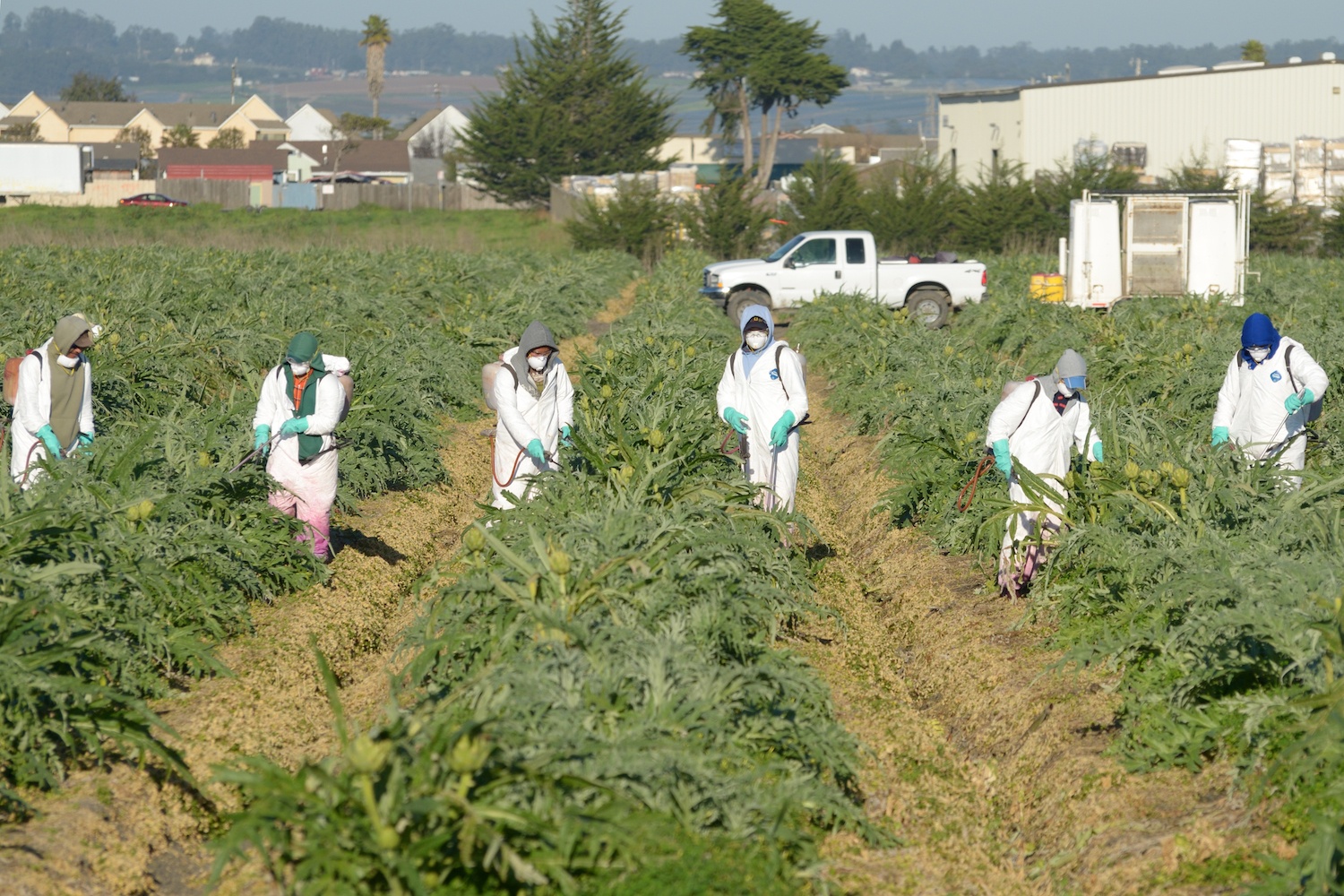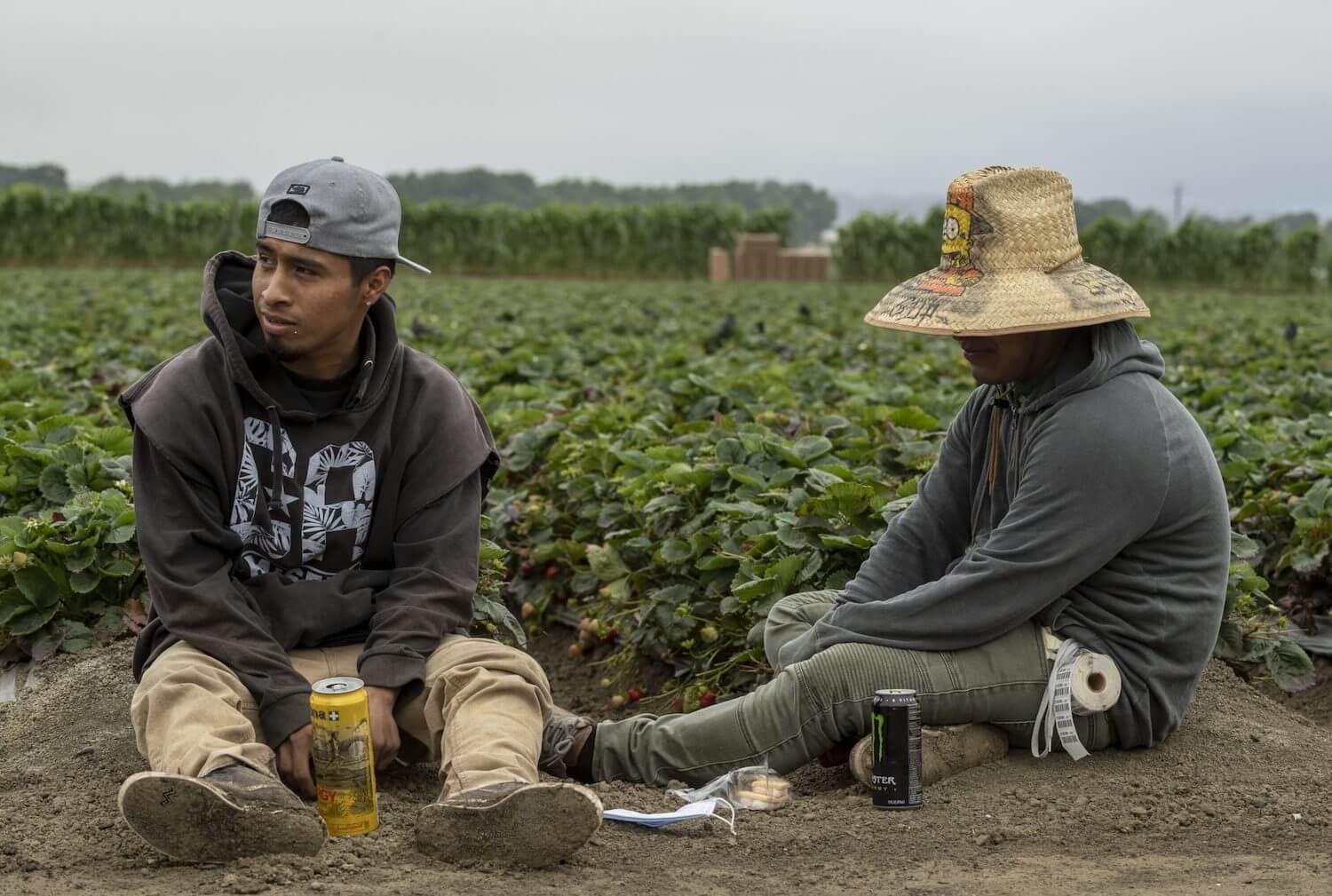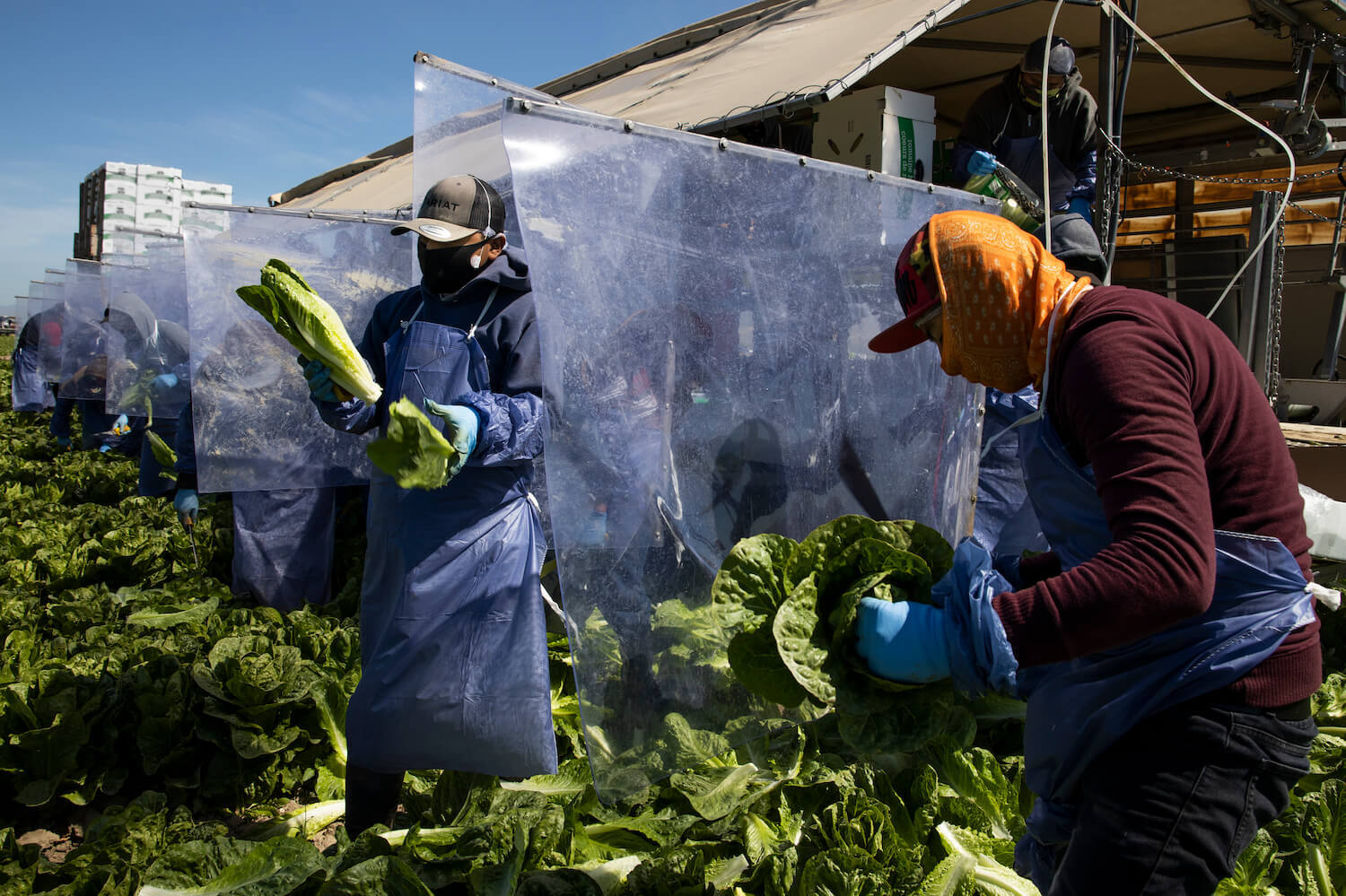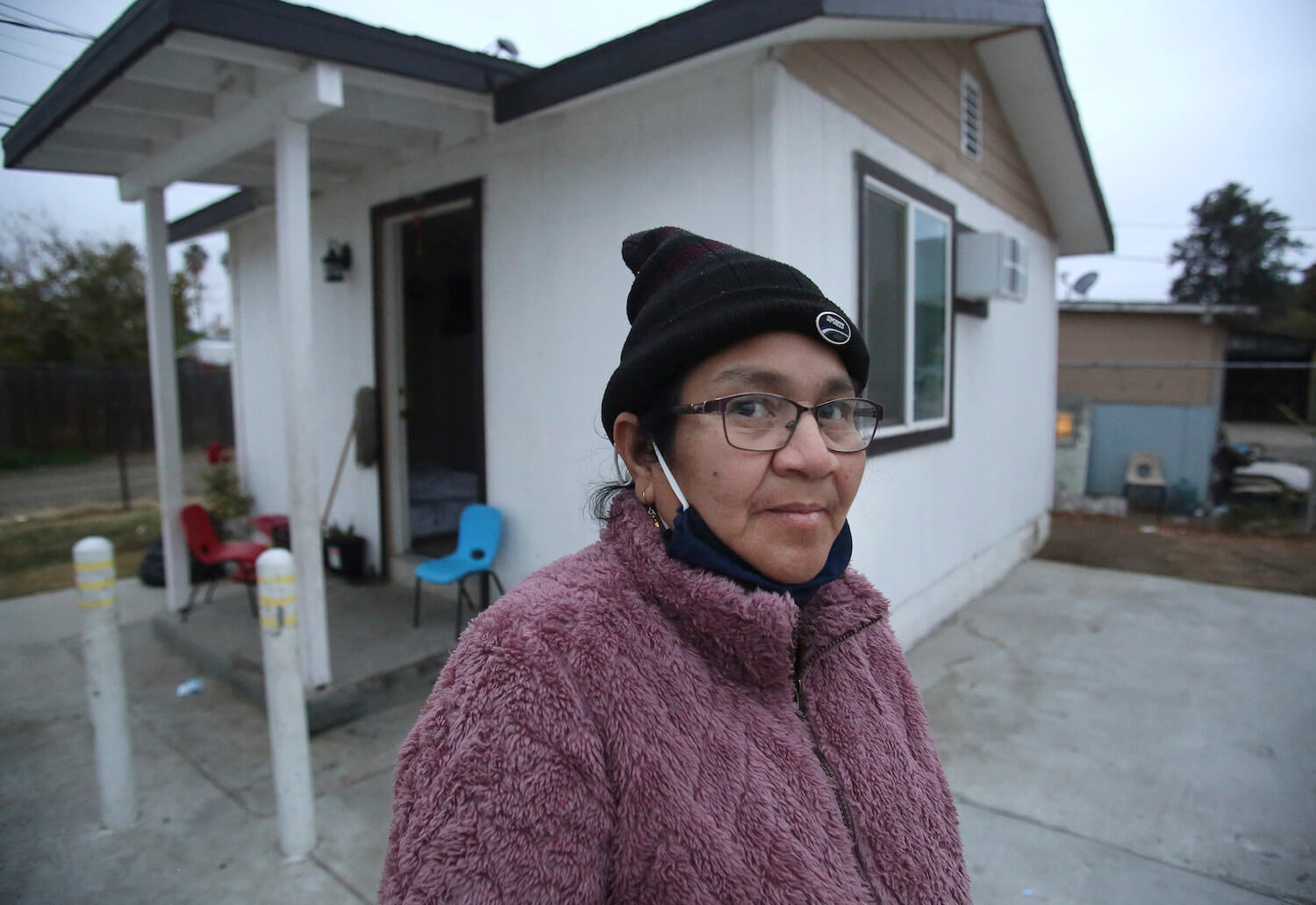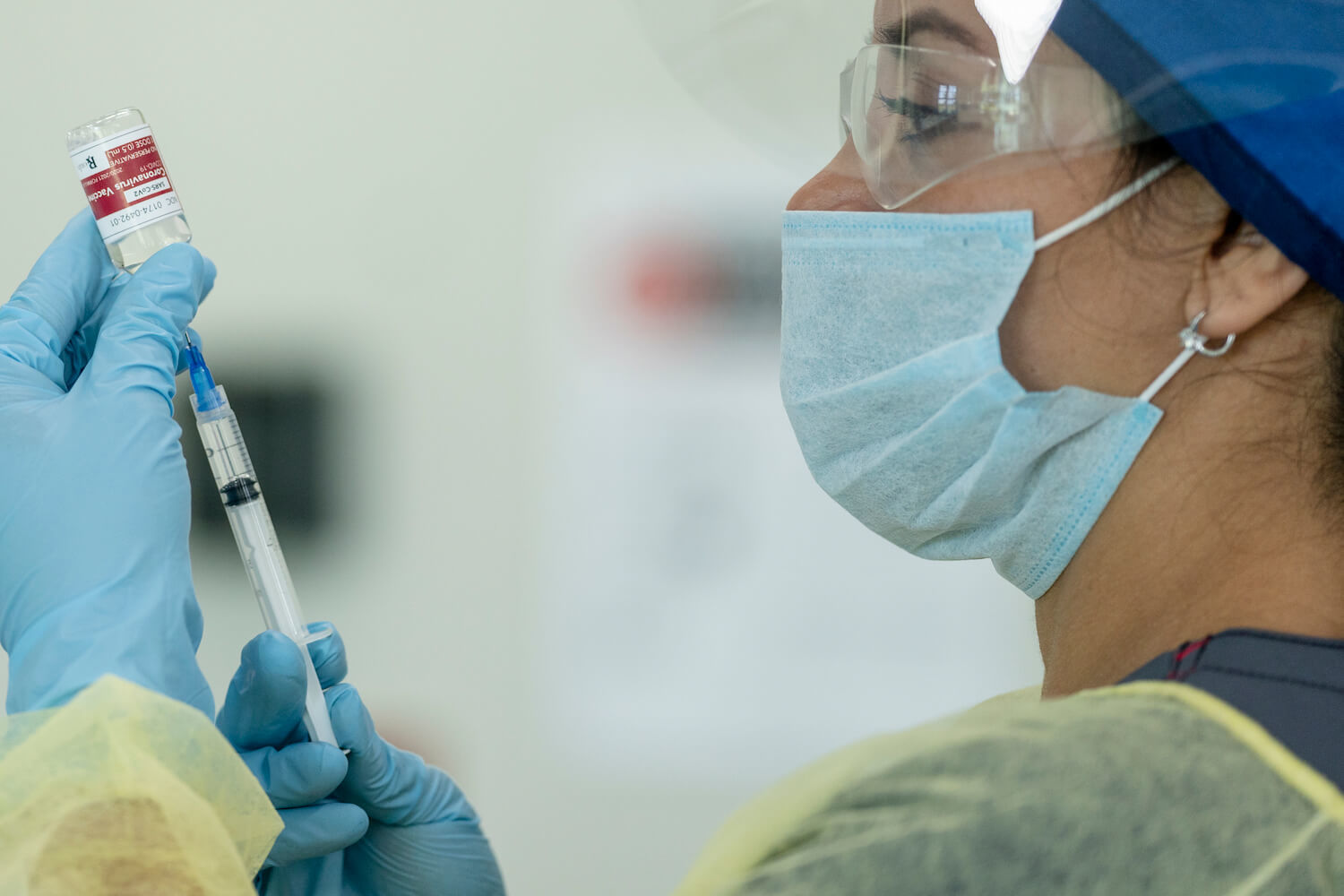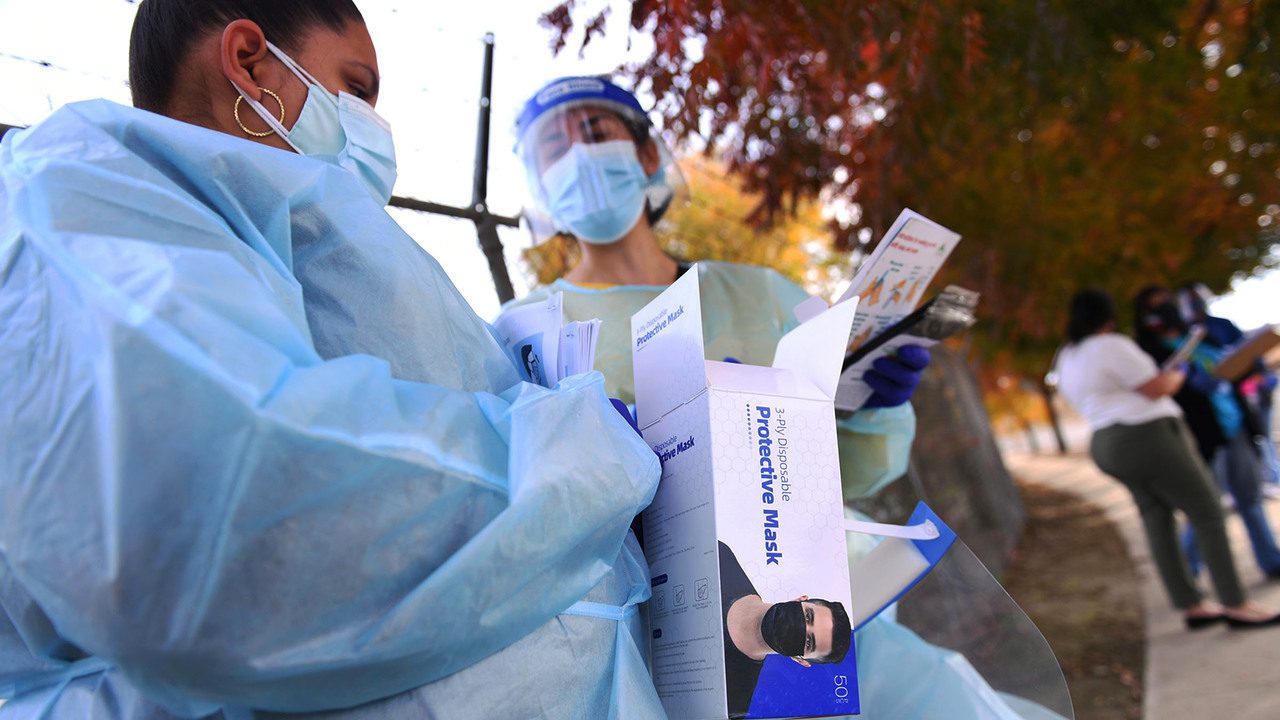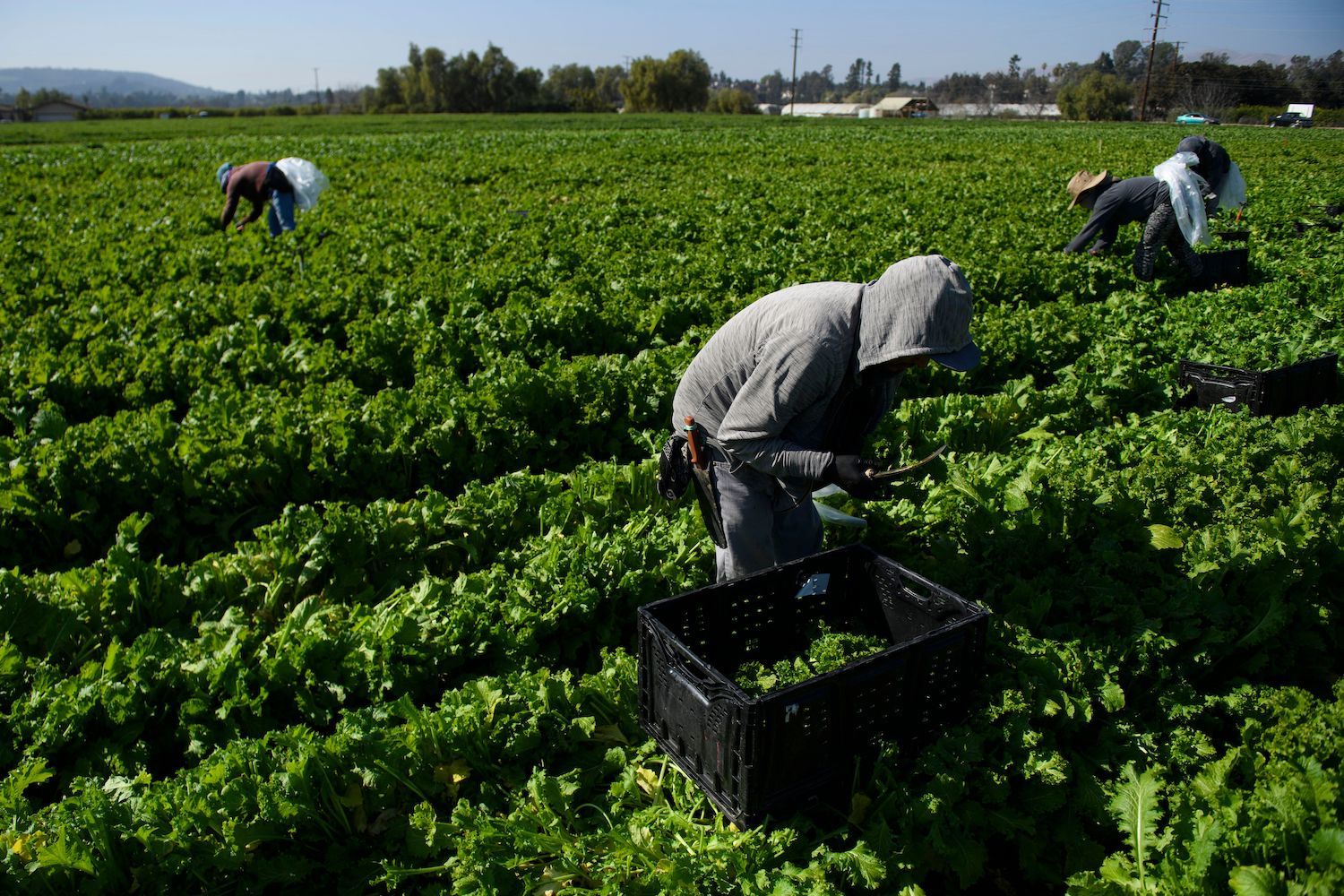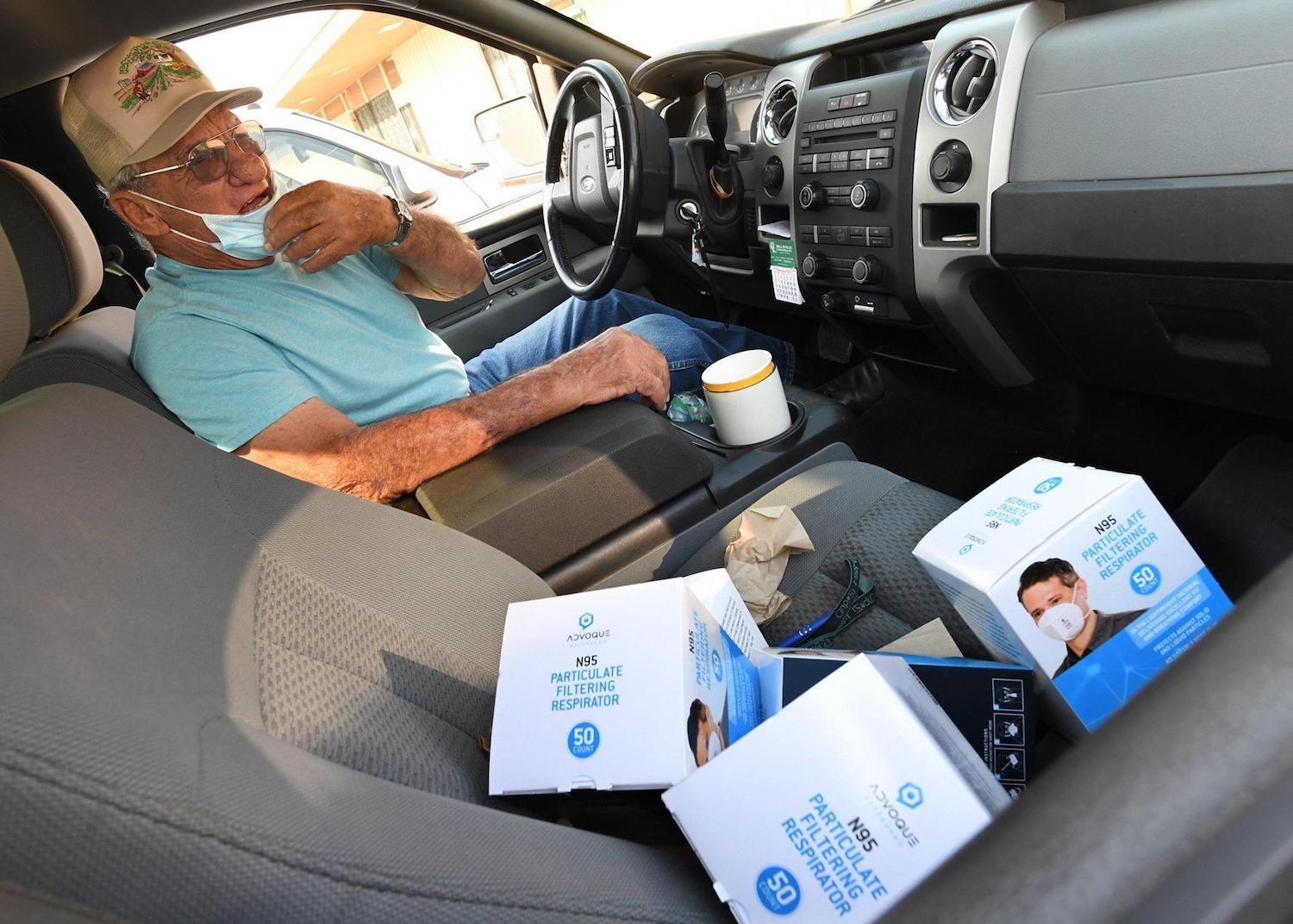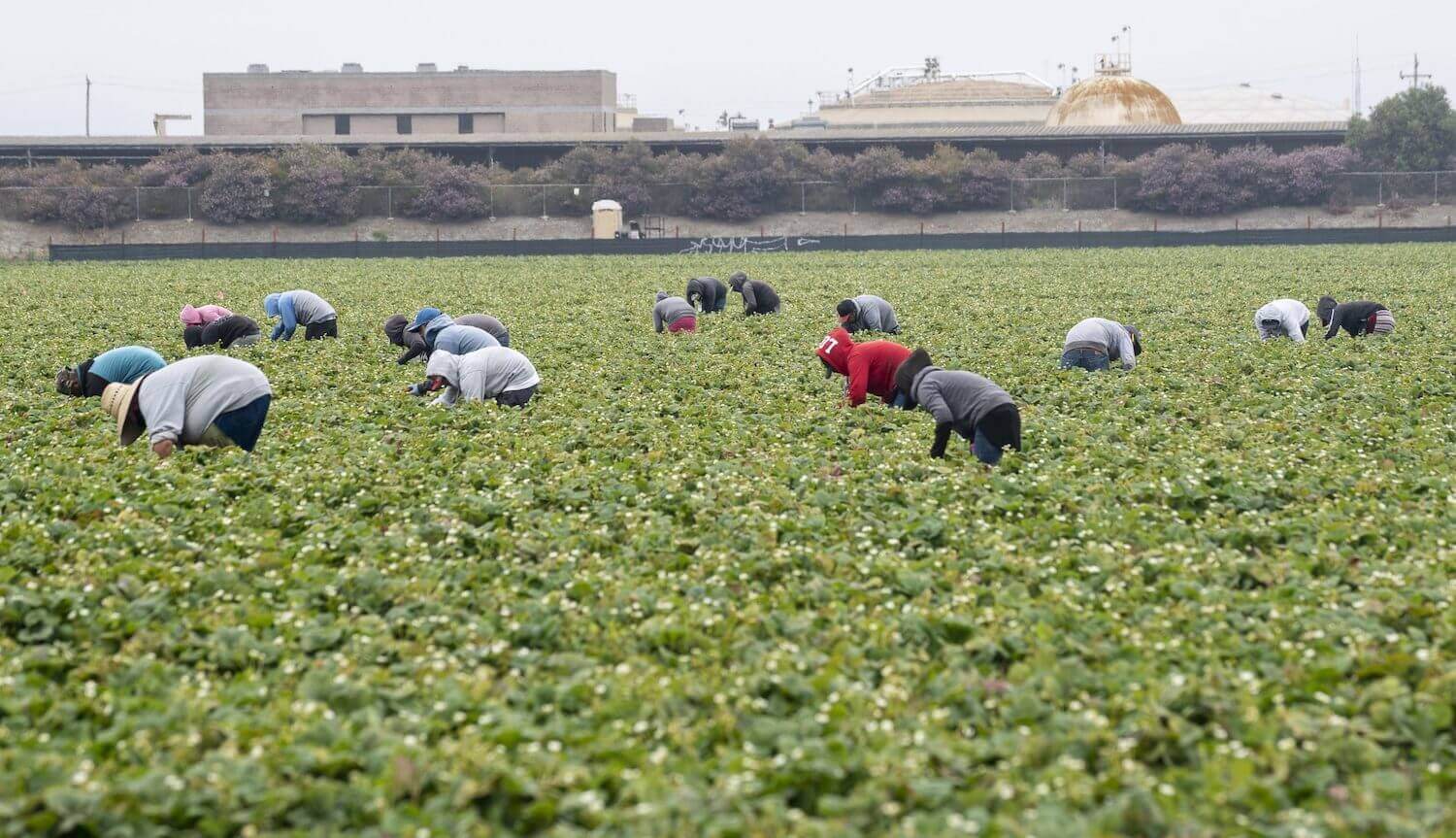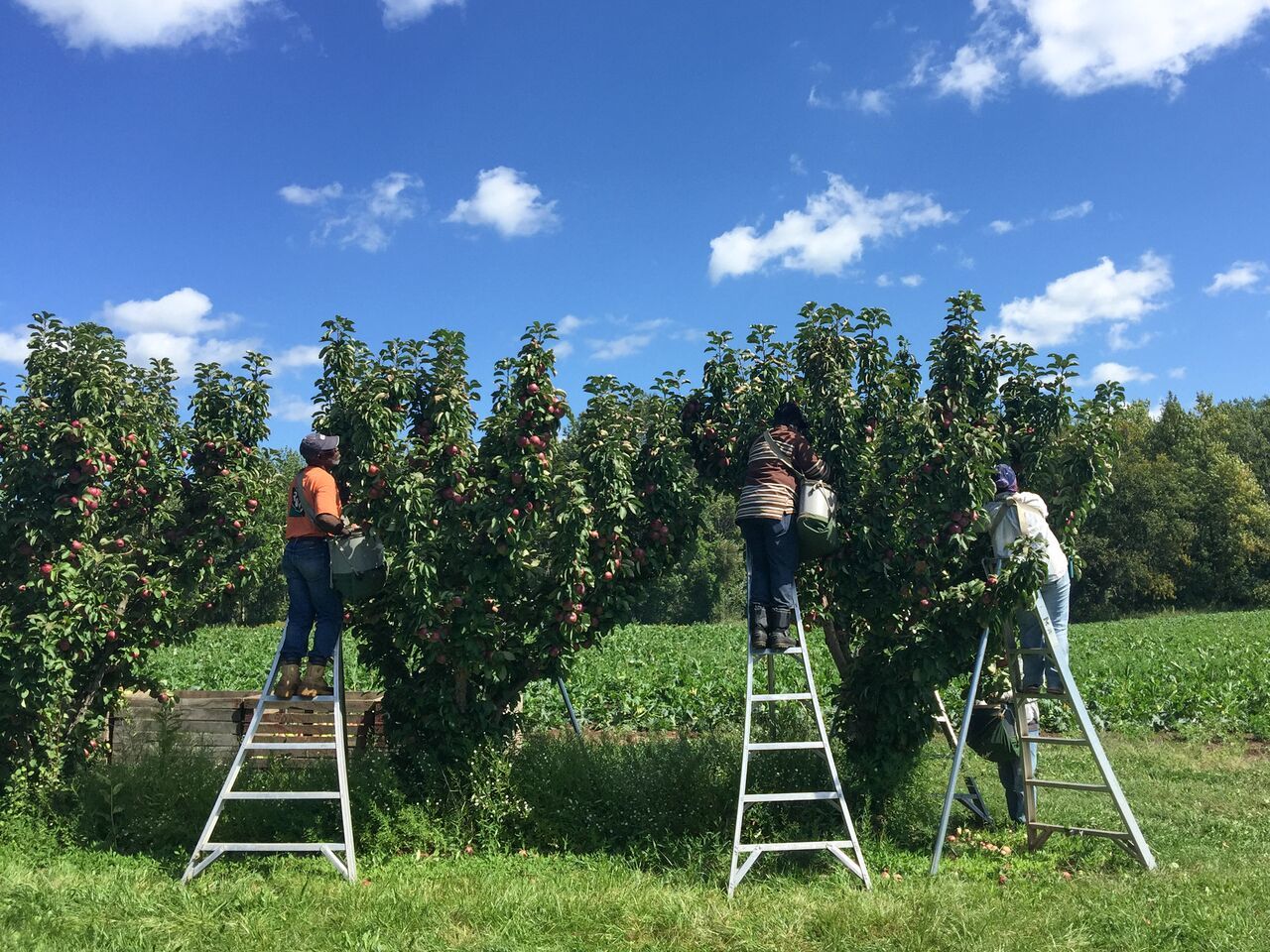
Arleen Thaler
Despite being essential workers with a high risk for Covid-19 infection, New York farm workers were not included in vaccination Phase 1B.
As the Covid-19 vaccination is rolled out in New York State, over 50,000 farm workers have been left in limbo after they were removed from the State’s implementation of Phase 1B at the last minute.
This article was originally published by Documented, a nonprofit news organization that covers New York’s immigrants and the policies that affect their lives. Follow them on Facebook and Twitter, or sign up for their newsletter.
According to CDC guidelines, farm workers are part of Phase 1B, the second group to receive the vaccine after frontline healthcare workers. Yet states are in charge of their own vaccine rollouts, and what the CDC recommends is not necessarily what states implement. In New York, Phase 1B is currently in effect, but it excludes farm workers, although it includes others in the food industry like grocery, restaurant and food delivery workers.
New York State indicated that farm workers would be on the list in accordance with CDC guidance in communications with the agricultural community, according to a source familiar with the discussions. But when Phase 1B began on January 11, they were left off the list. Some suggest this occurred when New York State announced it would follow the CDC guidelines that expanded to include all people over the age of 65 (instead of 75, as it had been previously), making nearly two million more people eligible and therefore even fewer vaccine doses to go around.
In upstate New York, the biggest Covid-19 outbreak occurred in a Madison County greenhouse, where 139 workers tested positive.
The Health Resources and Services Administration (HRSA) announced that beginning on February 15, it is launching a program where limited supplies of the vaccine will be available at selected HRSA health centers (there are three in New York State) serving “hard-to-reach and disproportionately affected populations” – including agricultural workers, as well as the homeless and public housing residents. However, these supplies are only available to populations that are already eligible in their states to receive the vaccine. Again, farm workers are excluded.
Farm workers are vulnerable to the coronavirus due to factors including crowded housing, inadequate testing, shared commutes to work and lack of sick leave. The Purdue Food and Agriculture Vulnerability Index estimates that nationwide, over 496,000 agricultural workers have tested positive for coronavirus, with over 3,000 in New York State alone. In upstate New York, the biggest Covid-19 outbreak occurred in a Madison County greenhouse, where 139 workers tested positive.
And while food production, including meatpacking, has caused deadly outbreaks nationwide, some state officials are pushing back on giving workers access to the vaccine. In Nebraska, Governor Pete Ricketts said that undocumented meatpacking workers would be ineligible to receive the vaccine (he later clarified through a spokesperson that proof of citizenship would not be required for a vaccination, but that Nebraska would prioritize citizens and legal residents ahead of undocumented immigrants). In Arizona, Rep. Debbie Lesko came under fire for her racist comment during a congressional hearing that although she has “worked with people that are Hispanic… we have to take care of American citizens, or people that are here legally, first.” The Department of Agriculture estimates that roughly half of farm workers in the U.S. are undocumented.
“The same consideration should involve agricultural and food processing workers who provide related essential assistance and were originally a part of this phase.”
On top of difficulties with vaccine rollout, there are logistical struggles. Farm workers often have spotty internet access and difficulty finding transportation, which makes vaccination efforts harder. As weeks goes by with vaccine shortages, an uptick in cases with more contagious variants and lack of state guidance, coalitions across the state are banding together to ensure farm workers get the vaccine.
New York State farm workers have pressured the government to put their employees on the priority list for vaccinations. Kim Skellie, the dairy operations manager at EL-VI farms in Newark, New York, says he understands the need to vaccinate other essential workers, but this doesn’t negate the need for New York farmworker vaccinations.
“It appears the production of the vaccine was struggling more than we realized,” Skellie said. “Now, boy, I don’t know. I’d like to think we’ll be vaccinated in the next three or four months.”
On January 13, the Farm Bureau and 16 other agricultural organizations wrote a letter to Governor Andrew Cuomo, urging him to allow New York farm workers to get vaccinated. By the end of the month, Democratic State Senator Michelle Hinchey and Rep. Dona Lupardo, both chairs of their respective ag committees, wrote their own letter to send to the governor and Department of Health Commissioner Howard Zucker.
“The current plan recognizes the importance of food services by including grocery store workers as an eligible group in Phase 1B,” the letter read. “The same consideration should involve agricultural and food processing workers who provide related essential assistance and were originally a part of this phase.”
Lupardo and Hinchey have not received a response.
“It just seemed like when the 65 and overs came into the mix, it really stressed the system, but I can’t point to that exactly.”
Across the state, advocates, farmers, medical workers and politicians ask one question: why were New York State farm workers taken out of the current eligibility for Phase 1B?
“I really don’t know what the calculation was,” said Lupardo. “It just seemed like when the 65 and overs came into the mix, it really stressed the system, but I can’t point to that exactly.”
The Office of the Governor and the Department of Health did not respond to requests for comment on why New York farm workers were removed from Phase 1B.
Currently in the state, there are over 10 million people eligible to receive the vaccine and approximately 500,000 doses delivered from the federal government each week. As new vaccines are developed and distributed, this number will increase, but it’s still slower than advocates want.
“Unless there’s a dramatic increase in the number of vaccines sent, you do the math,” said Mary Jo Dudley, the director of the Cornell Farmworker Program. “It’s going to be months just to vaccinate the current population that’s eligible.”
No one knows when vaccine eligibility will expand to include agricultural workers again.
“It’s going to be months just to vaccinate the current population that’s eligible.”
Juan Antonio, who works at a Long Island nursery, is one of the few New York State agricultural workers to have been vaccinated. But he didn’t get it because he’s an essential worker, he got it because he’s 70 years old.
“[We’ve received] very little information about the vaccine,” he said, speaking to Documented in January before he received the vaccine.
At the nursery, where he has worked since he arrived in New York from El Salvador in 2005, several of his coworkers contracted the virus – all of whom recovered. Juan Antonio is cautious – he gets tested frequently, wears a mask, and maintains social distancing at work.
He was able to get vaccinated in early February when he received word that there were vaccines available through a Suffolk County program. He said his experience was positive, and compared it to getting the flu shot.
“I can tell everyone… do not be afraid,” he said. “They should try to find a vaccine if they have the opportunity because it’s good for themselves and their families.”
The coronavirus remains as much of an issue in rural areas of New York State as it does in urban areas, particularly because these places may be farther from medical care and hold fewer ICU beds. Robert Shelly, a primary care physician who works at Finger Lakes Community Health and is on the board of the Migrant Clinician’s Network, looked through his electronic record of lab results one morning in January.
“The reality of the inequity kind of hits you in the face.”
“The first three Covid tests that I saw were all positive and they were all farm workers,” Shelly said. “The reality of the inequity kind of hits you in the face.”
He said that while migrant farm workers made up roughly a third of the health center’s patients, they were a “vast majority” of Covid cases. When the vaccine becomes more readily available, researchers and advocates worry about vaccine hesitancy. A study from the University of California Berkeley that surveyed over 1,000 farm workers in the Salinas Valley found that 52 percent said they were extremely likely to get vaccinated, while 20 percent wasn’t sure and 11 percent was unlikely. The survey pinpointed fear of side effects, distrust of the government, and worries about getting coronavirus from the vaccine as reasons why people would be wary. Others resist the medical system because they’re worried about the cost or had bad experiences with the healthcare system previously.
In upstate New York, Juan Saldana, a registered nurse, runs the mobile clinic for Finger Lakes Community Health, driving between five counties to serve patients who are mainly agricultural workers. In the beginning of the pandemic, farm workers were resistant to getting a vaccination, but now that they’ve seen the harm Covid-19 has done to their family members, the tone has changed, he said. Most of the workers he’s spoken with will accept the vaccine, Saldana explained.
Saldana doesn’t know when farm workers will become eligible for the vaccine, but once they are, he already has a refrigerator set up and the capability to vaccinate through the mobile clinic. Once vaccinated, Saldana would monitor the workers for 15 minutes to ensure they didn’t have a rare allergic reaction, with epi-pens, Benadryl and resuscitation equipment on hand.
“The plan’s there,” Saldana said. “It’s just the waiting for the actual vaccine.”

